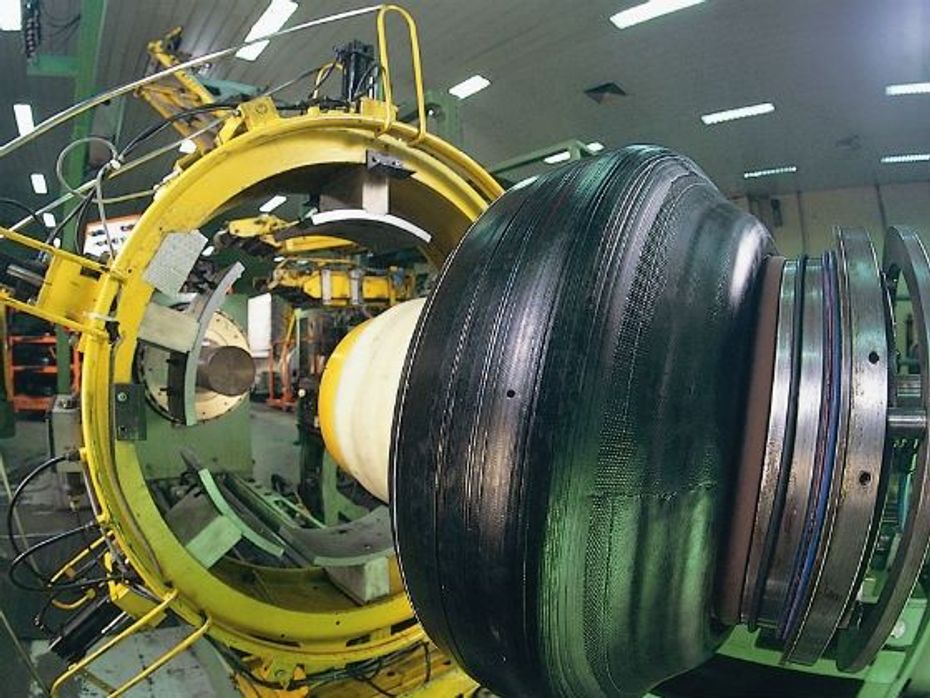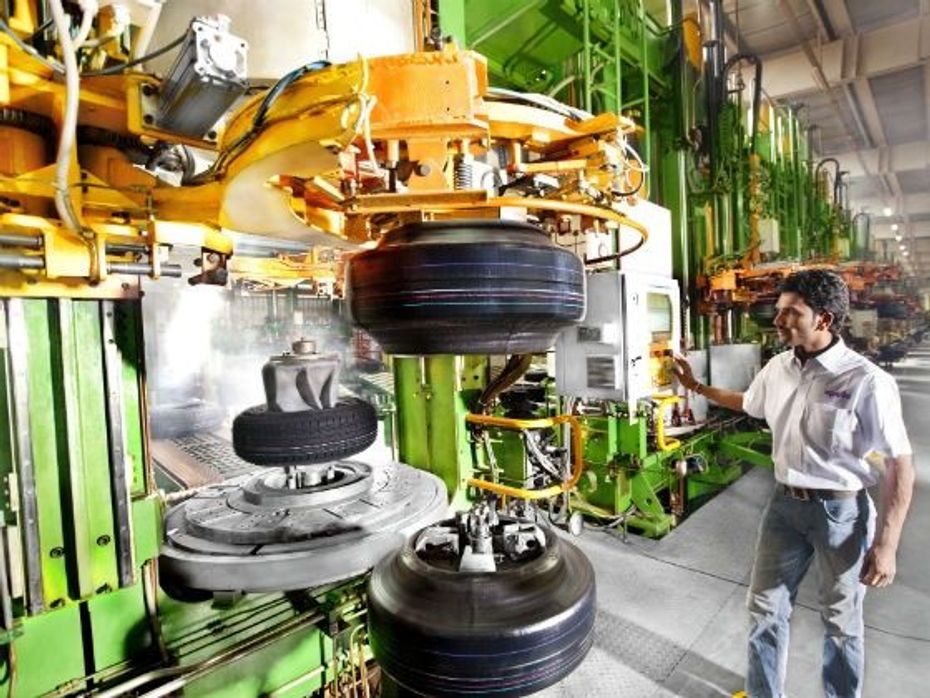
2024 Toyota Camry Launched In India At Rs 48 Lakh; Now...
- Dec 11, 2024
- Views : 15622


For a layman, a tyre is made of rubber, treated from its natural state and shaped to make it roll and wear evenly. For someone who knows and cares a bit, a tyre is built from layers of different materials, bears a distinct tread pattern and depending on its compound, can alter the performance and efficiency of a vehicle to a vast extent. Either way, how many have seen tyres being made? Not many I suppose, and so we couldn’t resist the chance to witness the making of a tyre.
Cut to the Apollo tyre factory in Chennai where a tyre is manufactured every eleven minutes on an ideal day. First thoughts after looking at the layout of the plant is that one could relate it to a kitchen, one Masterchef himself would be proud of. The plant is spread across acres of land and is capable of manufacturing 500 tonnes worth of tyres (16,000 per day in tyre numbers) and is undergoing an expansion to make 750 tonnes. Over a month, Apollo manufactures 2.5 lakh tyres that are built on two assembly lines. Here’s how it is done…

Raw rubber is about 70 percent of a tyre. It comes in trucks and is dropped off at a common point where raw rubber is mixed and processed to form sheets of rubber. They are melted and cut and mixed a couple of times to make the entire sheet of rubber of equal strength at any point. This sheet is about 40 metres long. In the melting process, a mix of materials determined by men in lab coats is added to the rubber. This defines the compound, soft/medium/hard in most basic terms, of the batch of tyres that are being cooked.
There you have it, the most important step of the cook, getting the premix done. The sheets are then sent to two assembly lines, one for commercial vehicle tyres and one for passenger car tyres. Let’s focus on the passenger car tyres now on.

A tyre has various ingredients – first comes the tread or the grooves you see on the surface of the tyre which is your contact patch on the road. It needs to be deep enough to a minimum of 5mm to turn your tyres from becoming racing slicks. Then comes the sidewall, which obviously is the side of the tyre. The tread is harder as it is subject to most wear. The sidewall has to be of a softer compound to flex and cushion bumps but with the elastic strength to not lose form. Then there is an inner liner which does the job of a tube in a tubeless tyre. The inner edge of the tyre is called the bead apex. It is the hardest part of the tyre as it comes in contact with the rim of a wheel and needs to maintain its shape at all times. Under the tread are two layers of steel wires set in position by a layer of rubber that holds them in place.

These two belts are mixed with rubber by a process called calendaring – the consolidation of steel and rubber. A massive machine pulls in long strands of the steel wire and blends in the rubber to form a thin sheet at 60 metres per minute. It’s a fairly violent process to say the least, and to keep the machine in check, we found these massive 8 caliper brake discs just in case something went wrong, or the machine has to be stopped after the loop of wires ran out.

All these parts – the two belts, the inner liner, the bead and the tread are all brought together in the next step. This is called the green tyre or raw tyre, one that is sent to the moulding machines. The moulding is where all the magic happens. It is where the tyre is cooked for a minimum of eight minutes. What you get at the end of the moulding process is a finished tyre ready to be branded.
By the end of it, it is hard to tell the different parts of a tyre to the naked eye. They are however made separately and accurately brought together. You will get a neat cross section of your tyre if you slice it through. We recommend doing some donuts though, at least you will know what the chicken mesh looks like, because after cooking comes burning, and we like burning rubber the right way don’t we!

2024 Toyota Camry Launched In India At Rs 48 Lakh; Now...

Mahindra BE 6e Launched At Rs 18.9 Lakh, Gets Modern Styling, Premium...

Skoda Kylaq: Here’s What You Get With Each Of Its 4 Variants

Mahindra’s Top 5 Big Claims About BE 6e & XEV 9e

Kia Syros Unveiled Globally As The Most Premium Sub-4m SUV In India

Mahindra BE 6e vs Tata Curvv EV: Which Electric SUV Claims The Better...

Mahindra BE 6e: A 360-degree Look At Its Exterior & Interior In 13...

Mahindra BE 6e vs XEV 9e: An In-depth Comparison Of Mahindra’s...

New 2024 Honda Amaze Arrives In India At Rs 8 Lakh
India's largest automotive community
 Maruti Suzuki Wagon R: 25 Years of India’s Best-Selling Car Through Its Generations
Maruti Suzuki Wagon R: 25 Years of India’s Best-Selling Car Through Its Generations
 Here Are All The Mercedes-Benz Cars Lined Up For A Showcase In The Bharat Mobility Global Expo 2025
Here Are All The Mercedes-Benz Cars Lined Up For A Showcase In The Bharat Mobility Global Expo 2025
 Maruti Suzuki Fronx Sea Bass Night Game Concept Is Basically The Crossover With A Boost On Steroids!
Maruti Suzuki Fronx Sea Bass Night Game Concept Is Basically The Crossover With A Boost On Steroids!
 Here Is The List Of Top 10 Fastest Cars Launched This Year
Here Is The List Of Top 10 Fastest Cars Launched This Year
 Toyota Camry
Rs. 48.00 Lakh
Toyota Camry
Rs. 48.00 Lakh
 Honda Amaze
Rs. 7.99 Lakh
Honda Amaze
Rs. 7.99 Lakh
 Audi Q7
Rs. 88.66 Lakh
Audi Q7
Rs. 88.66 Lakh
 Mahindra XEV 9e
Rs. 21.90 Lakh
Mahindra XEV 9e
Rs. 21.90 Lakh
 Mahindra BE 6
Rs. 18.90 Lakh
Mahindra BE 6
Rs. 18.90 Lakh